Skip to content
Dimensions in Critical Care 2018Charles Bruen2018-04-10T07:17:15-05:00
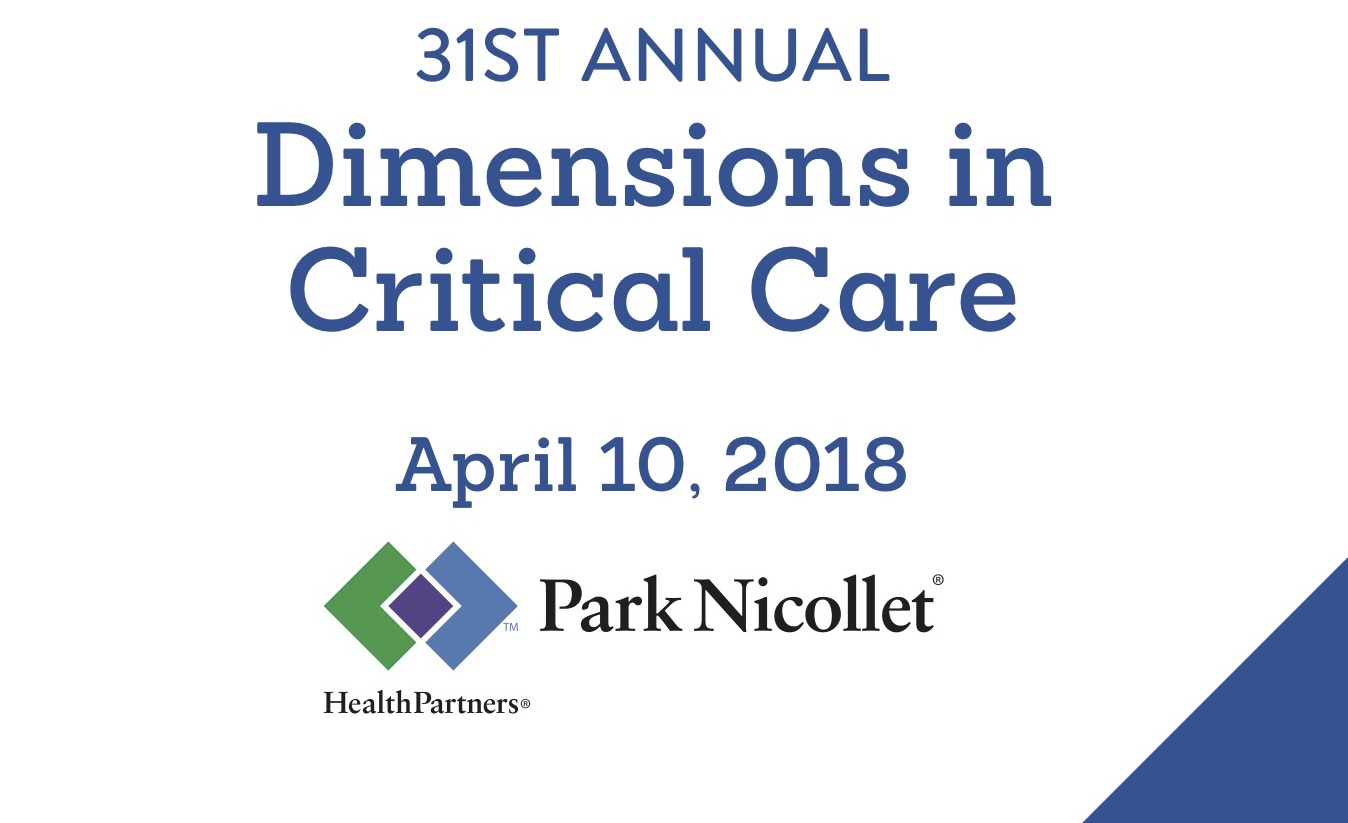
Talking Death: Best Ways to Convey the Worst
| Outline |
|
Presentation |
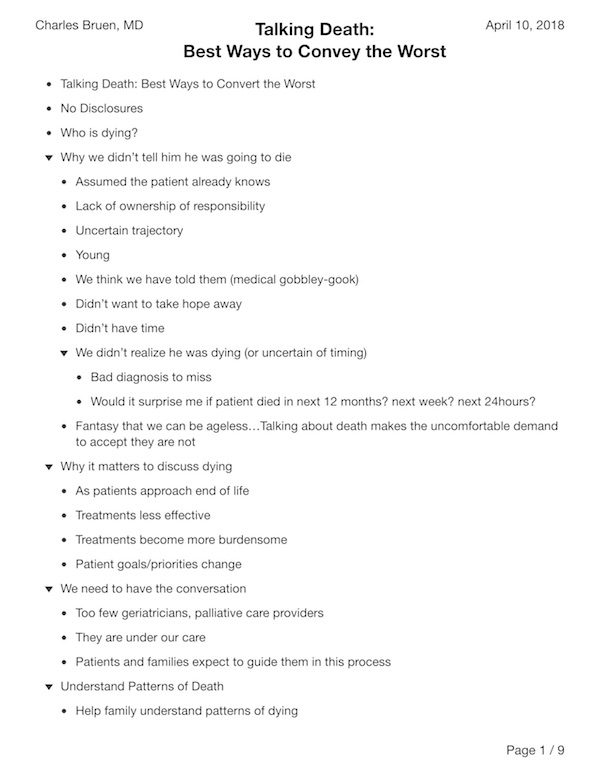 |
|
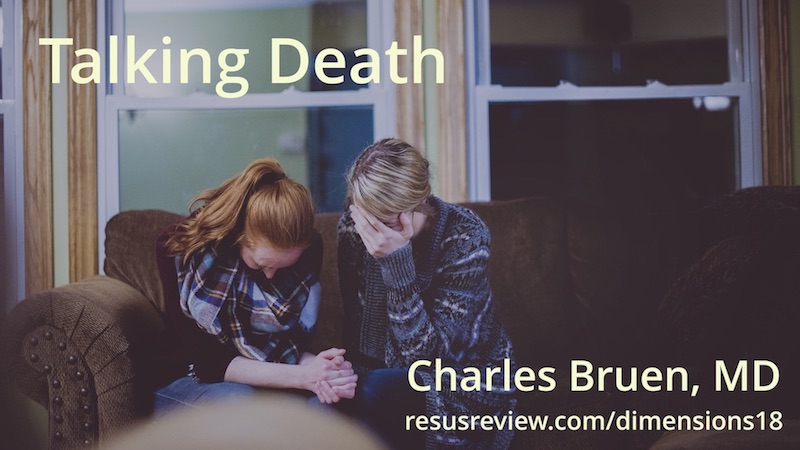 |
Selected References (Key Readings)
- Bailey, et al. Trajectories of End-of-Life Care in the Emergency Department. Ann Emerg Med 2011;57:362.
- KE Steinhauser, et al. Factors Considered Important at the End of Life by Patients, Family, Physicians, and Other Care Providers. JAMA 2000;284:2476.
- JR Curtis and DB White. Practical Guidance for Evidence-Based ICU Family Conferences. Chest 2008 October;134(4):835.
- JR Lunney, et al. Patterns of Functional Decline at the End of Life. JAMA 2003;289:2387.
- JE Nelson, et al. Family Meetings Made Simpler: A Toolkit for the ICU. J Crit Care. 2009 December;24(4):626.e7.
- EB Gay, et al. The intensive care unit family meeting: Making it happen. J Crit Care 2009 December;24(4):629.e1.
- TR Fried, et al. Understanding the treatment preferences of seriously ill patients. N Engl J Med 2002;346:1061.
- SM Mierendorf, et al. Palliative Care in the Emergency Department. Permanente Journal, Spring 2014;18(2):77.
- Atul Gawande. Being Mortal: Medicine and What Matters in the End. Metropolitan Books, 2014. Print.
Cardiac Arrest and Shock in 2018
| Outline |
|
Presentation |
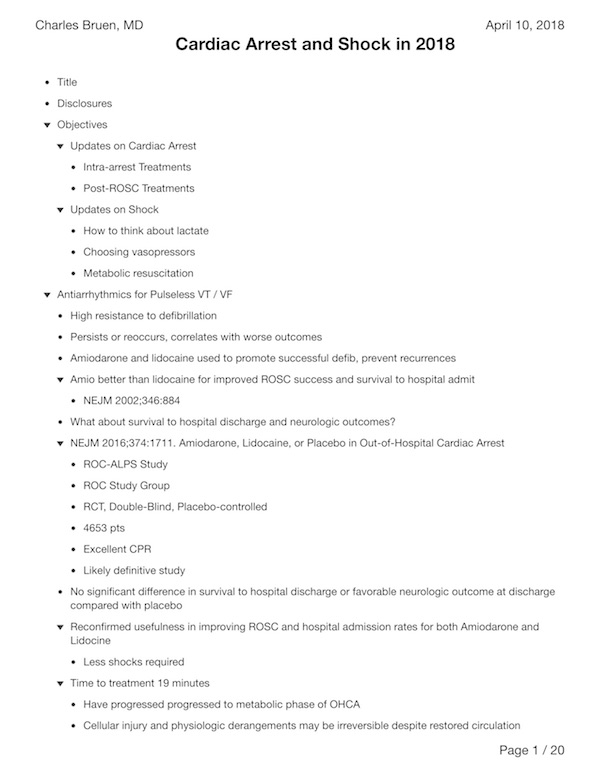 |
|
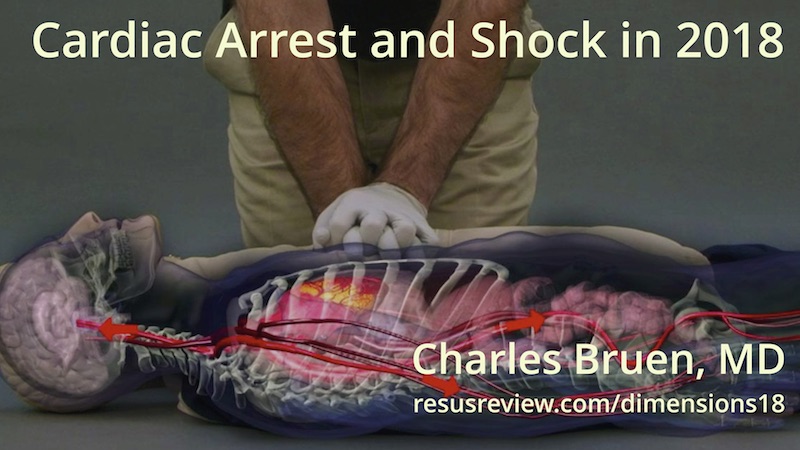 |
Selected References (Key Readings)
- Nolan JP, Omato JP, et al. Resuscitation Highlights in 2017. Resuscitation Journal.
- Jabre et al. Early Identification of Patients with Out-of-Hospital Cardiac Arrest with No Chance of Survival and Consideration for Organ Donation. Annals of Internal Medicine 2016;165:770.
- Dumas et al. Emergency PCI in Post–Cardiac Arrest Patients without ST-Segment Elevation Pattern: Insights From the PROCAT II Registry. JACC: Cardiovascular Interventions 2016.
- Kirkegaard, et al. Targeted Temperature Management for 48 vs 24 Hours and Neurologic Outcome After Out-of-Hospital Cardiac Arrest: A Randomized Clinical Trial. JAMA 2017;318(4):318.
- Kudenchuck et al. Amiodarone, Lidocaine, or Placebo in Out-of-Hospital Cardiac Arrest. NEJM 2016;374;1711.
- Khana et al. Early coronary angiography in patients resuscitated from out of hospital cardiac arrest without ST-segment elevation: A systematic review and meta-analysis. Resuscitation 121 (2017) 127–134.
- PS Chan, RA Berg, Y Tang, et al. Association Between Therapeutic Hypothermia and Survival After In-Hospital Cardiac Arrest. JAMA 2016;316(13):1375.
- Khanna A, English SW, Wang XS, et al. Angiotensin II for the Treatment of Vasodilatory Shock. N Engl J Med. 2017 Aug 3;377(5):419-430.
- CB Overgaard and V Dzavik. Inotropes and Vasopressors: Review of Physiology and Clinical Use in Cardiovascular Disease. Circulation 2008;118:1047.
- Annane D, et al. Hydrocortisone plus Fludrocortisone for Adults with Septic Shock. N Engl J Med. 2018. 378(9):809.
- Jentzer et al. Pharmacotherapy Update on the Use of Vasopressors and Inotropes in the Intensive Care Unit. Journal of Cardiovascular Pharmacology and Therapeutics 2015, Vol 20(3):249.
- van Diepen, et al. Contemporary Management of Cardiogenic Shock. Circulation 2017;136:e232.
- Jentzer et al. Management of Refractory Vasodilatory Shock. Chest 2018.
- Marik PE, Khangoora V, Rivera R, Hooper MH, Catravas J. Hydrocortisone, Vitamin C, and Thiamine for the Treatment of Severe Sepsis and Septic Shock: A Retrospective Before-After Study. Chest 2017;151(6):1229.
- Cardenas-Garcia J, Schaub KF, Belchikov YG, et al. Safety of Peripheral Intravenous Administration of Vasoactive Medication. J Hosp Med. 2015; 10:581-585.
- Loubani OM, Green RS. A Systematic Review of Extravasation and Local Tissue Injury from Administration of Vasopressors through Peripheral Intravenous Catheters and Central Venous Catheters. J Crit Care. 2015; 30:e9-e17.
- Reynolds PM, MacLaren R, Mueller SW, et al. Management of Extravasation Injuries: A Focused Evaluation of Noncytotoxic Medications. Pharmacotherapy. 2014; 34:617-632.
Page load link




